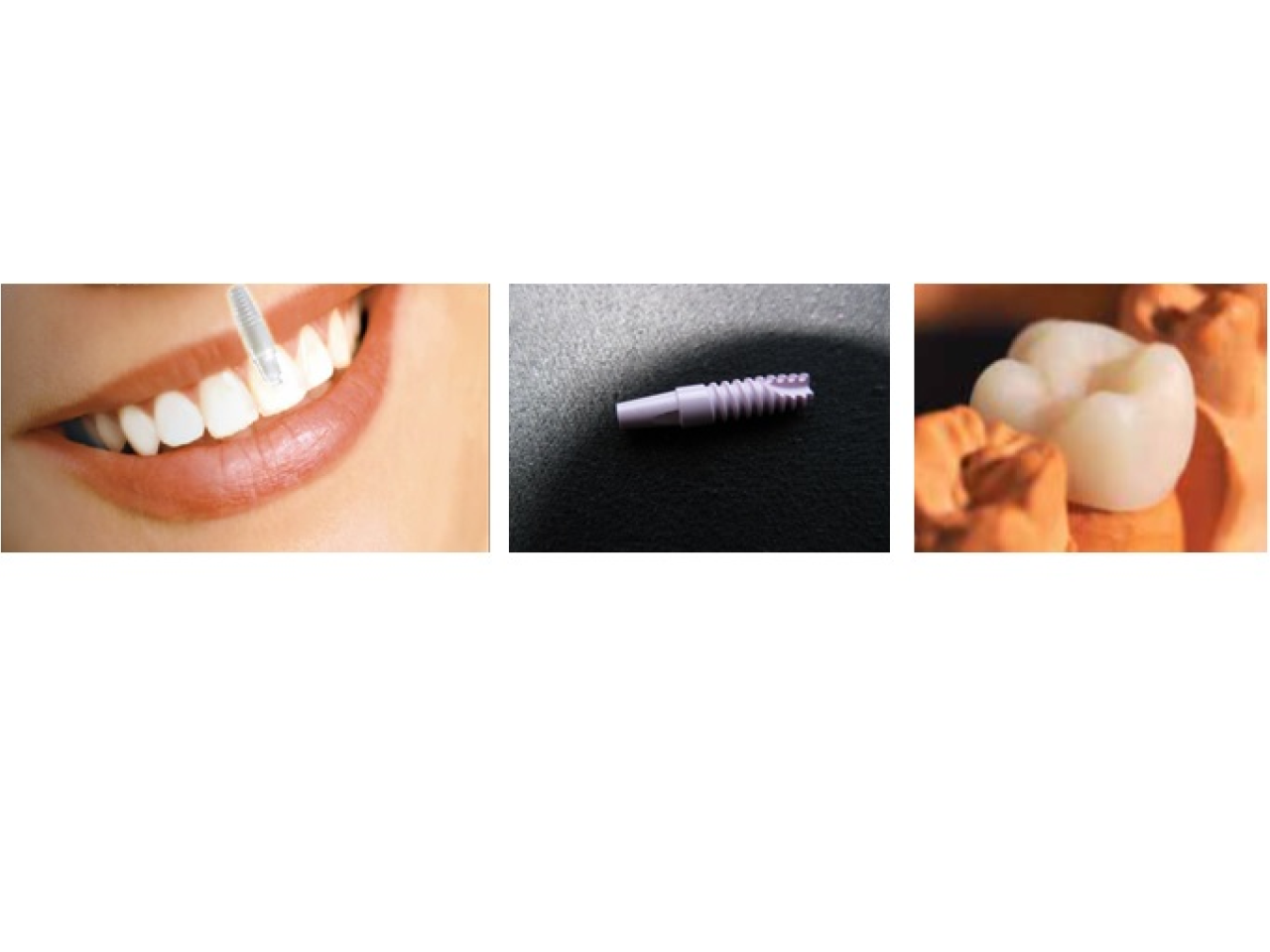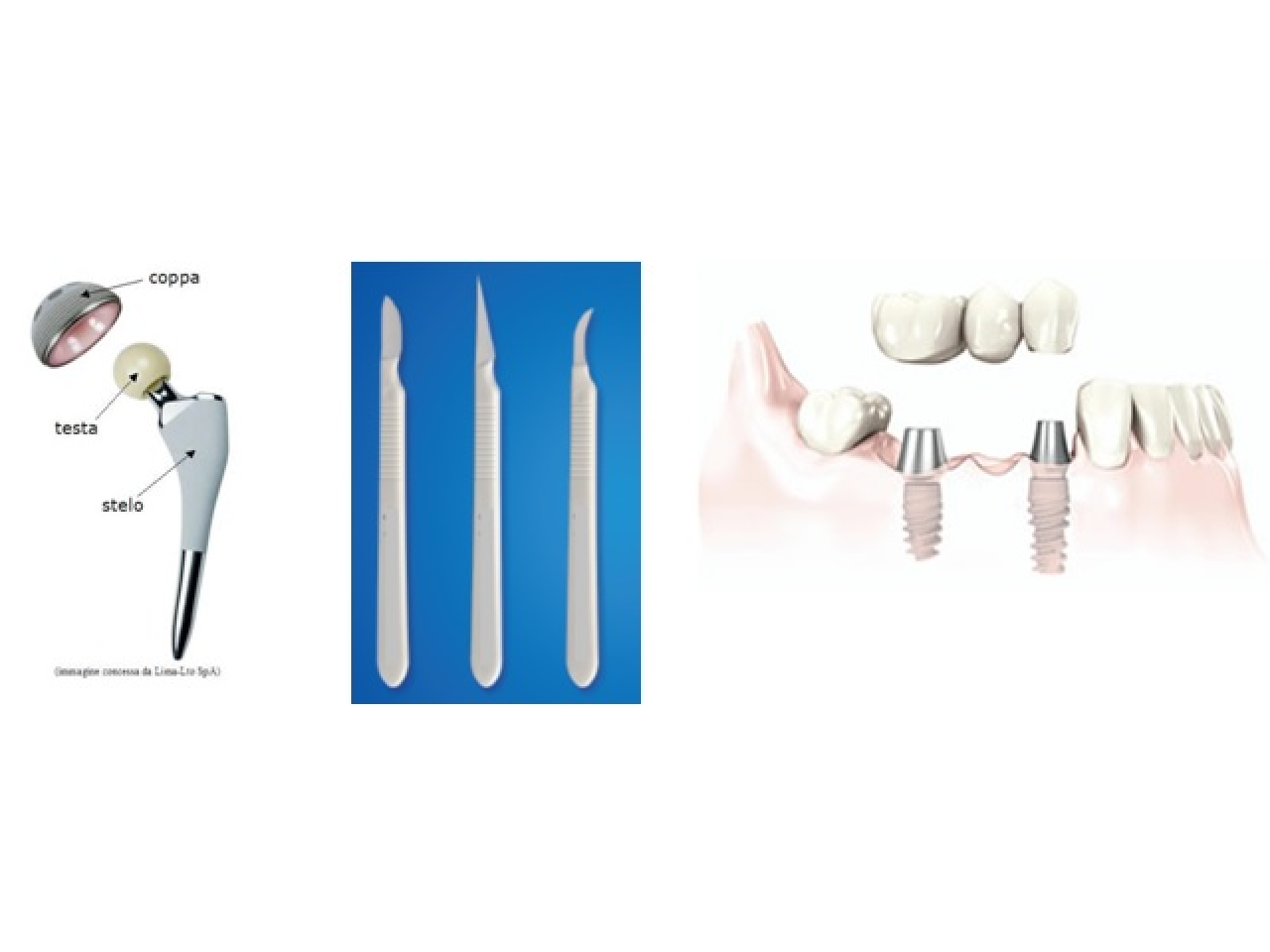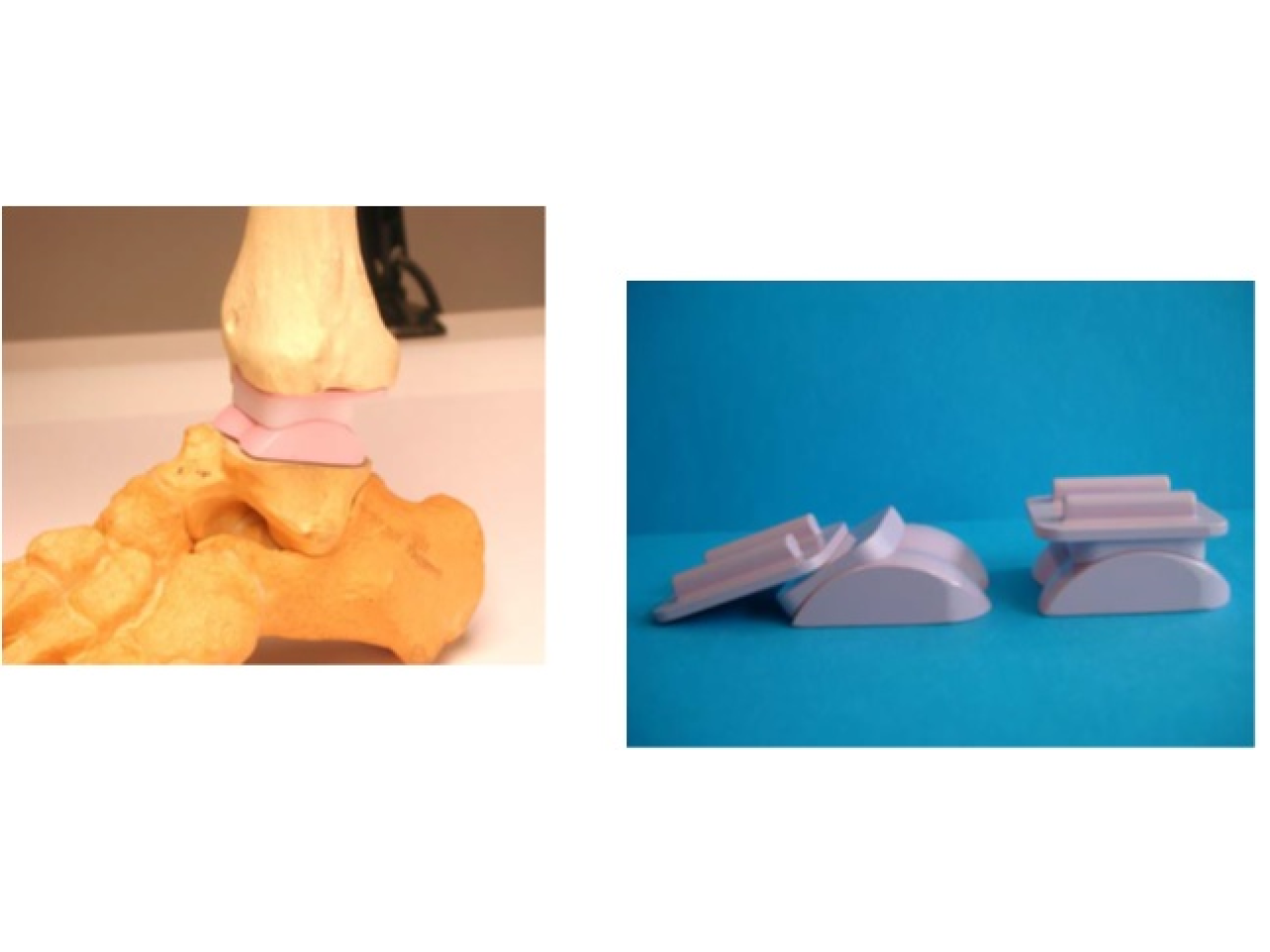ENEA, Faenza Research Laboratories, offers bioinert and biocompatible ceramic materials ( zirconia (ZrO2) e alumina (Al2O3) based composites), suitable to be applied in dental and orthopaedic implant sector and as surgical ceramic blades. ENEA has near-net-shape manufacturing techniques for the fabrication of prototype components and instrumentation for the characterization and qualification of those components.
 Dental implantology: examples of biocompatible ceramic material application
Dental implantology: examples of biocompatible ceramic material application
These materials are characterized by high hardness, toughness, fracture resistance and biocompatibility . When zirconia is tetragonal stabilized by means of suitable doping compounds, as for example yttria, has the peculiar characteristic of high toughness . The alumina - zirconia composites allow to limit one of the typical problems connected to the use of zirconia in the biomedical field. That is the degradation of the mechanical properties after a long permanence in hot and humid environments, e.g. during sterilization or in contact with body fluids, known as Low Temperature degradation ( LTD ). Besides, these ceramic materials fully satisfy the aesthetic requirements: indeed they can assume both a pink coloring useful for the realization of the implants, and a white/ivory coloring for the realization of the crowns (due to the use of suitable colored dopants).
The bioinert ceramic materials are applied in the context of bone replacement (hip, ankle, knee prostheses) and dental implantology (endosseous pins and dental crowns), in the sector of packaging for the pharmaceutical industry (in equipment for the dosage of pharmacological liquid or powders), in the field of cutting blades (knives, scalpels, etc.).
 Bioinert ceramic applications: hip prostheses, scalpels, complete dental implants.
Bioinert ceramic applications: hip prostheses, scalpels, complete dental implants.
Alumina-zirconia composite ceramics for ankle prosthesis
Among the different application of the biocompatible ceramic materials, the replacement of bone joint is perhaps the greatest challenge for such materials, because of the high loads that are applied. In particular, the ankle joint is one of the most stressed in the human body. It is made up of three components of complex shape and quite small size, which must withstand mechanical loads constituted by the body weight and the forces that are transmitted through the ankle, during the different movements, as well as those constituted by the wear of the same components in a continuous relative movement between them. The material used for this type of prosthesis is an alumina-zirconia based biocompatible composite, with extremely high mechanical properties such as hardness, fracture toughness and mechanical strength, as well as a high reliability. The three components of the ankle prosthesis (talar, median and tibial insert) have been realized by means of the injection moulding technique, which allowed to obtain the net-shape components. This technique has the double advantage of allowing the production of near-net-shape components and be easily scalable to industrial level, in order to industrialize the production process. A biocompatible ceramic based on alumina– zirconia material, with extremely high mechanical properties such as hardness, fracture toughness and mechanical strength, as well as a high reliability, was developed. This material was used for the manufacturing of a prototype of a complete ankle prosthesis, which consists of three components (talar, meniscal and tibial insert).
CeramTec AG, Lima Lto SpA Sistemi Medicali, LEMI Laboratoire d’Evaluation des Matériels Implantables, Università Cattolica del Sacro Cuore
The material and the prosthetic component have been developed within the project HYPERCER – “High performance ceramics by near-net-shape forming processes” (EU-FPW5/1998-2002). Starting from this material other zirconia - alumina based materials have been designed with specific properties, depending on the application. Brevetto IT0001407390 (2014) “Materiale ceramico per protesi dentarie”, Autori: G. Magnani, F. Mazzanti, L. Beaulardi.
 Ankle prosthesis and components
Ankle prosthesis and components

